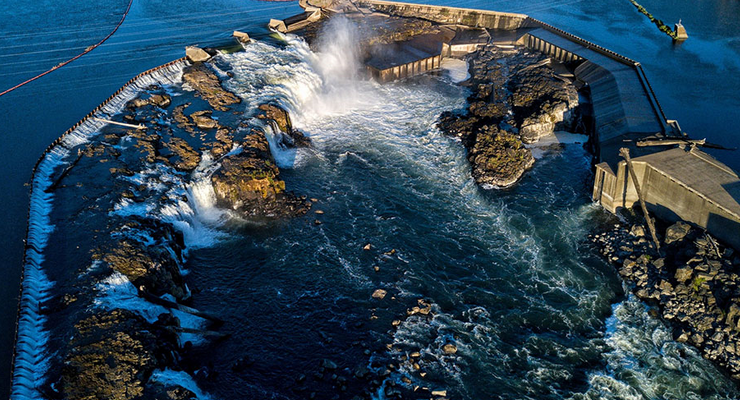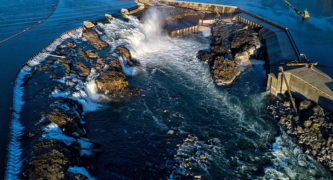
Jet Propulsion Laboratory in Pasadena and French space agency Centre National d’Études Spatial are collaborating on a global Surface Water and Ocean Topography (SWOT) mission that will make measurements of over 95 percent of Earth’s lakes, rivers, and reservoirs, using a satellite that will launch in November.
The mission managers say they hope to be able to resolve what is in reality a surprisingly limited view by humans of Earth’s freshwater bodies.
In a statement, JPL said researchers have reliable water level measurements for only a few thousand lakes around the world, and little to no data on some of the planet’s important river systems. By helping to provide a better understanding of Earth’s water cycle, the SWOT mission is expected to both help in better management of water resources and expand knowledge of how climate change affects lakes, rivers, and reservoirs.
Lee-Lueng Fu, Surface Water and Ocean Topography Project Scientist at JPL, said construction of the SWOT satellite is almost complete. One of its major components – the payload module – was built at JPL and shipped to the Thales Alenia Space facility in France, contracted by CNES, to be integrated with the satellite.
“After many tests, integration, and now the whole observatory satellite plus payload, is nearly ready to be shipped back to the U.S. for launch later this year,” Fu said.
The mission will have several key tasks, including measuring the height of water bodies on Earth’s surface. Over the ocean, the satellite will be able to “see” features like eddies less than 60 miles across – smaller than those that previous sea level satellites could observe.
SWOT will also measure more than 95 percent of Earth’s lakes that are larger than 15 acres and rivers wider than 330 feet across, JPL said.
“Current databases may have information on a couple thousand lakes around the world,” Tamlin Pavelsky, NASA’s freshwater science lead for SWOT, said. “SWOT will push that number to between two million and six million.”
Fu added the mission will use radar to bounce signals back from the satellite, from the earth, the surface water back to the satellite,” he said. “So the one trip travel time of radar waves gives you the precise distance between the satellite and surface water, and the satellite position is also known, so then you can basically subtract the distance between satellite and surface water from the altitude of the satellite. Then you get the elevation of water relative to the center of earth.”
JPL said the mission will provide game-changing data using a new instrument called the Ka-band Radar Interferometer (KaRIn), which bounces radar pulses off the water’s surface and receives the return signal with two antennas at the same time. The antennas are spaced 33 feet apart on a boom, enabling researchers to gather information along a roughly 75-mile-wide swath of Earth’s surface – a wider path than that of any of SWOT’s predecessors.
“The science instruments, which will take measurement of surface water, were built by JPL, designed by JPL and assembled at JPL, so that’s NASA JPL’s major contribution,” Fu said. “After launch, there will be an extended period of time – many months for the radar engineers and satellite engineers – to really understand the measurements because this is the first of its kind, never done before in space. It would take about six to eight months to have the data qualified to be delivered to the public.”
Fu also added the satellite will be able to perform a global survey of all the surface water bodies on Earth every 21 days. It can also help monitor the state of the drought in Southern California by measuring surface water levels in real time.
Data collected by the SWOT satellite will also help scientists assess the impact of global warming on Earth’s water bodies.
“SWOT will also measure elevation of ocean water which will allow us to study the edges and the front end of the ocean circulation at a very small scale, which actually is responsible for transporting the carbon and heat from the atmosphere to the ocean,” Fu said. “SWOT will provide new information about the ocean’s capacity to keep absorbing heat and the carbon so that we can evaluate the evolution of climate change more precisely into the future.”
JPL said the SWOT mission is scheduled to launch in November from Vandenberg Space Force Base in California. The Canadian Space Agency and the United Kingdom Space Agency are also contributing to the mission.
To learn more about the mission, visit www.swot.jpl.nasa.gov.














 0 comments
0 comments


